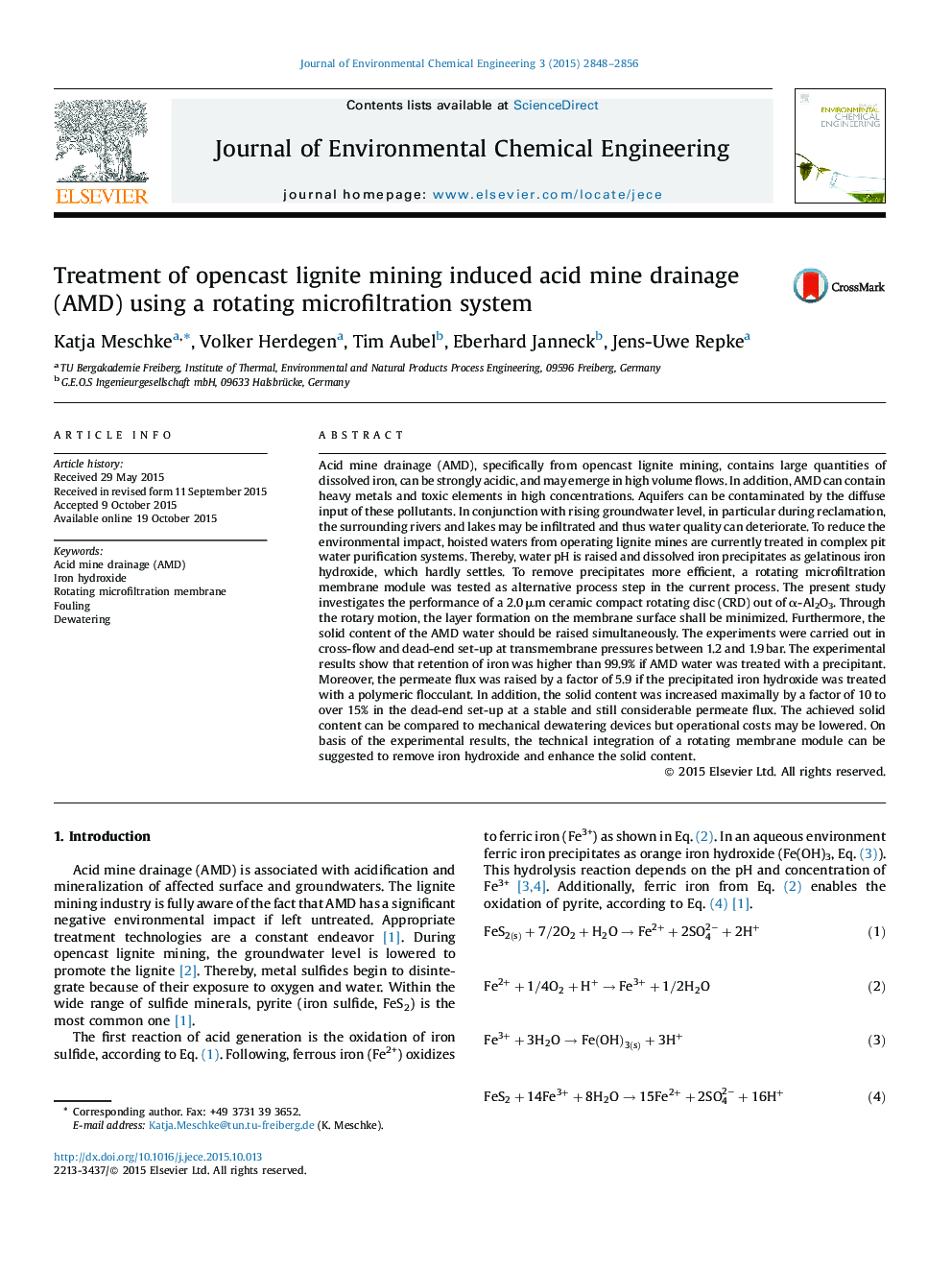| Article ID | Journal | Published Year | Pages | File Type |
|---|---|---|---|---|
| 222091 | Journal of Environmental Chemical Engineering | 2015 | 9 Pages |
•Retention of precipitated iron hydroxide higher than 99.9%.•Fouling depending on pH and pretreatment of AMD water causes flux decline.•Considerable fluxes in rotating membrane system even at high solid content.•Iron hydroxide sludge dewatering of more than 15% solid content.
Acid mine drainage (AMD), specifically from opencast lignite mining, contains large quantities of dissolved iron, can be strongly acidic, and may emerge in high volume flows. In addition, AMD can contain heavy metals and toxic elements in high concentrations. Aquifers can be contaminated by the diffuse input of these pollutants. In conjunction with rising groundwater level, in particular during reclamation, the surrounding rivers and lakes may be infiltrated and thus water quality can deteriorate. To reduce the environmental impact, hoisted waters from operating lignite mines are currently treated in complex pit water purification systems. Thereby, water pH is raised and dissolved iron precipitates as gelatinous iron hydroxide, which hardly settles. To remove precipitates more efficient, a rotating microfiltration membrane module was tested as alternative process step in the current process. The present study investigates the performance of a 2.0 μm ceramic compact rotating disc (CRD) out of α-Al2O3. Through the rotary motion, the layer formation on the membrane surface shall be minimized. Furthermore, the solid content of the AMD water should be raised simultaneously. The experiments were carried out in cross-flow and dead-end set-up at transmembrane pressures between 1.2 and 1.9 bar. The experimental results show that retention of iron was higher than 99.9% if AMD water was treated with a precipitant. Moreover, the permeate flux was raised by a factor of 5.9 if the precipitated iron hydroxide was treated with a polymeric flocculant. In addition, the solid content was increased maximally by a factor of 10 to over 15% in the dead-end set-up at a stable and still considerable permeate flux. The achieved solid content can be compared to mechanical dewatering devices but operational costs may be lowered. On basis of the experimental results, the technical integration of a rotating membrane module can be suggested to remove iron hydroxide and enhance the solid content.
Graphical abstractFigure optionsDownload full-size imageDownload as PowerPoint slide
